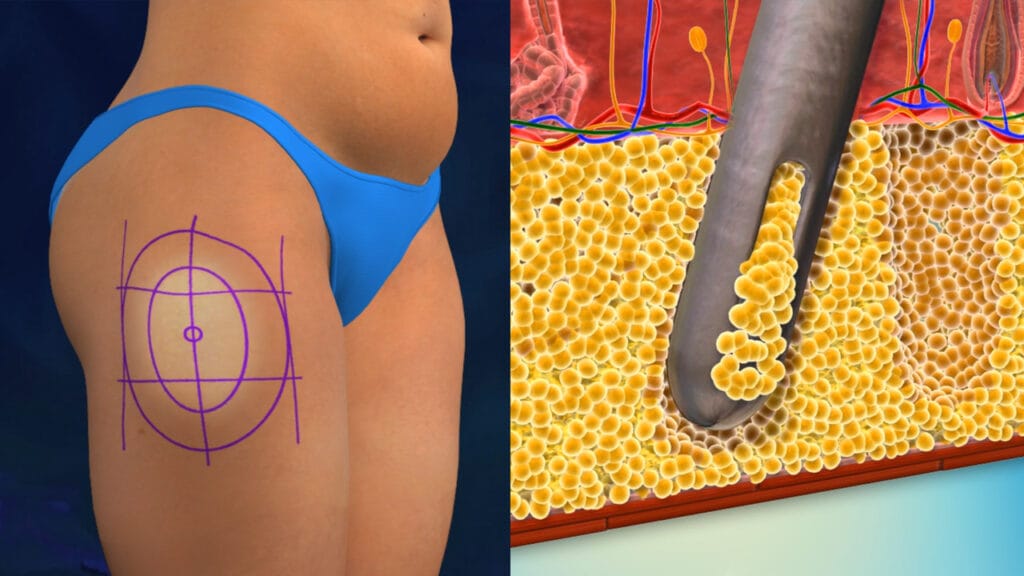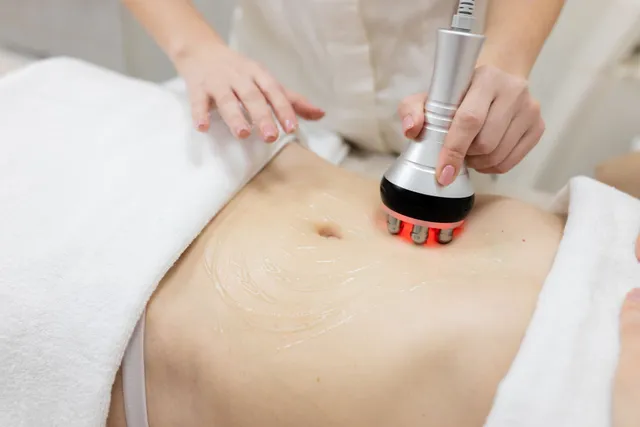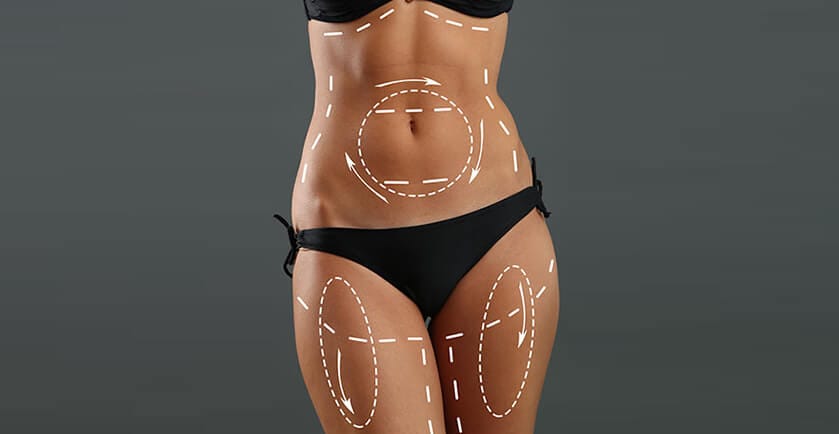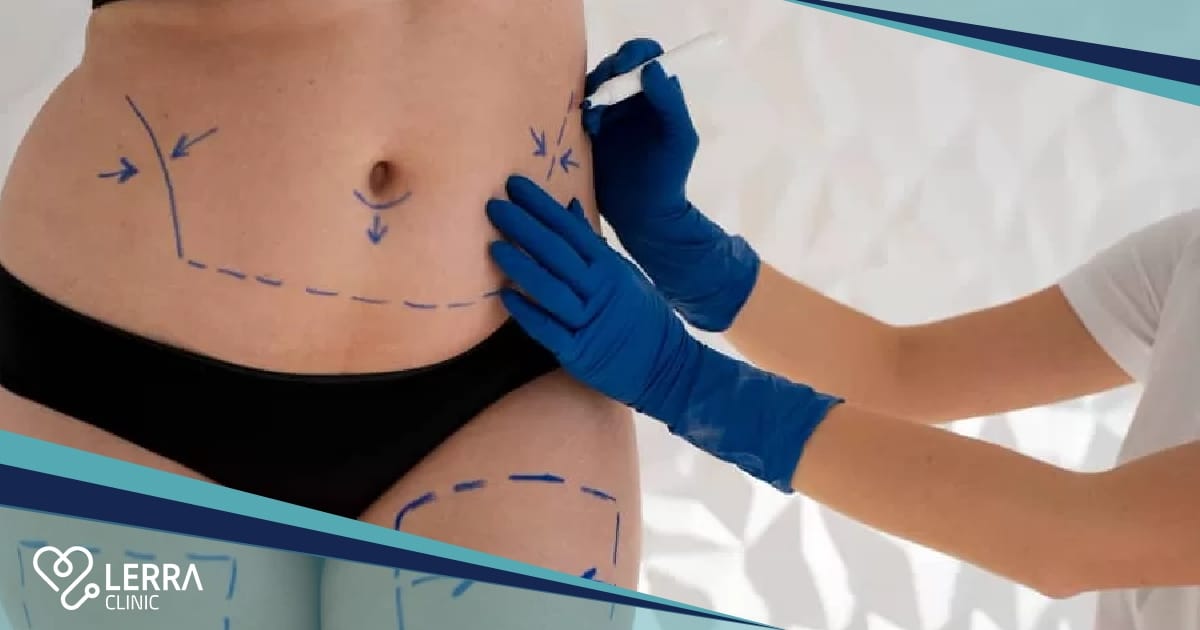Curious about liposuction? This guide offers everything you need to know about liposuction: the procedure, techniques, what to expect, and more. Learn about preparation, risks, recovery, and costs to make an informed choice.
Table of Contents
Key Takeaways
- Liposuction is primarily a cosmetic procedure aimed at contouring the body by removing stubborn fat deposits, rather than for significant weight loss.
- Various liposuction techniques, including traditional, laser-assisted, and ultrasound-assisted methods, offer different benefits and efficiencies tailored to patient needs.
- Ideal candidates for liposuction are healthy individuals close to their ideal body weight with good skin elasticity, and they must avoid smoking to minimize surgical risks.
What is Liposuction?
Liposuction, often referred to as lipoplasty, is a surgical procedure designed primarily for cosmetic enhancements. It involves the removal of fat from specific areas of the body using suction, aiming to contour and reshape these regions rather than serve as a weight loss procedure. The primary goal is to eliminate stubborn fat deposits that resist diet and exercise, enhancing body shape aesthetically. Many individuals consult plastic surgeons to discuss plastic surgery as an option.
Common areas where liposuction is applied include:
- Chin
- Neck
- Abdomen
- Breasts
- Buttocks
- Arms
- Hips
- Thighs
These areas can be precisely targeted, making liposuction a versatile option for refining physical appearance.
Types of Liposuction Techniques

Liposuction has significantly evolved since its inception, now encompassing various techniques tailored to enhance fat removal efficiency and patient outcomes. Each technique offers distinct benefits tailored to the patient’s needs and specific treatment areas.
Among the most notable techniques are traditional liposuction, laser-assisted liposuction, and ultrasound-assisted liposuction. Although all methods aim for fat reduction and body sculpting, they use different technologies and procedural nuances to achieve optimal results.
Traditional Liposuction
Traditional liposuction, also known as suction-assisted liposuction, remains a cornerstone in the realm of fat removal surgeries. This surgical procedure is particularly effective for eliminating stubborn fat layers that do not respond to diet and exercise. Small incisions are made, and a thin tube, or cannula, is inserted to break up and suction out the fat cells.
In the tumescent liposuction technique, a variant of traditional liposuction, a saline solution mixed with epinephrine is injected into the targeted fat to ease removal and minimize blood loss. This method is often preferred for its effectiveness in reducing complications and enhancing recovery.
Laser-Assisted Liposuction
Laser-assisted liposuction uses laser light to liquefy fat cells, making them easier to remove through a small incision and known for its precision and less invasive nature. This technique simplifies fat removal and promotes skin tightening due to the laser’s heat effect on collagen fibers, while power assisted liposuction offers another effective method for fat reduction.
Brands like SmartLipo and Slimlipo are popular for this method, as they provide effective body contouring with minimal downtime and reduced risk of complications. Its reduced invasiveness and skin-tightening benefits make laser-assisted liposuction a popular choice for many patients.
Ultrasound-Assisted Liposuction

Ultrasound-assisted liposuction (UAL) utilizes sound waves to emulsify fat cells before removal. A metal rod emitting ultrasound energy is inserted into the fat deposit during the procedure, breaking down fat cells for easier extraction with less trauma to surrounding tissues.
This method is especially useful for treating fibrous body areas, such as the back or male breast tissue, where fat is harder to remove with traditional techniques. The precision and efficiency of ultrasound-assisted liposuction make it a valuable option in the arsenal of body contouring methods.
Ideal Candidates for Liposuction
Ideal candidates for liposuction are typically:
- Healthy individuals without underlying conditions that could complicate the procedure
- Generally within 30% of their ideal body weight
- Have a Body Mass Index (BMI) under 30
This ensures that the liposuction procedure targets areas of excess fat that diet and exercise alone cannot address.
Moreover, good skin tone and elasticity are crucial for achieving smooth and aesthetically pleasing results. Candidates should not smoke, as smoking increases surgical risks and can negatively impact the outcome and recovery process. Meeting these criteria aids in achieving the best possible surgical results.
Preparing for Liposuction Surgery
Preparing for liposuction involves several critical steps to ensure a safe and effective procedure. A thorough medical evaluation is essential to assess overall health and identify any risks. Your surgeon may conduct bloodwork to check for any potential anesthetic allergies and other health markers.
Avoiding certain medications, such as blood thinners and herbal supplements, before surgery can reduce the risk of bleeding and other complications. Fasting for about 12 hours before the procedure and arranging post-operative transportation and support are also important steps.
The Liposuction Procedure
The liposuction procedure typically starts with the administration of anesthesia, which can range from local to general anesthesia, depending on the extent of the surgery. Twilight IV sedation is often chosen for its reduced risks and side effects compared to general anesthesia. Once the patient is sedated, small incisions are made in the targeted areas.
A cannula is then inserted through these incisions to break up the fat cells, which are subsequently suctioned out through a vacuum device. Laser or ultrasound technology can further enhance fat removal by liquefying or emulsifying the fat for easier extraction. The entire process is closely monitored by the surgical team to ensure patient safety and optimal results.
Recovery and Aftercare
Post-operative care is crucial for a smooth recovery and optimal results. Wearing compression garments helps manage swelling and supports body contouring. Fluid drains might be placed at surgical sites to prevent fluid build-up and aid in healing.
Pain management is crucial, with significant pain reduction usually occurring within one to two weeks. Light exercise can typically be resumed around four weeks post-procedure, though individual recovery times may vary.
Risks and Complications
Like any surgical procedure, liposuction carries certain risks and potential complications. These can include bleeding, anesthesia reactions, and complications from treating larger body areas or multiple procedures. Bruising and damage to deeper structures, such as nerves and blood vessels, are also possible.
Infection is a notable risk, emphasizing the importance of proper surgical hygiene and post-operative care. Fluid accumulation can also occur, requiring medical intervention to prevent further complications. Discussing these risks with a qualified surgeon helps in making an informed decision.
Expected Results and Longevity

Liposuction results are typically long-lasting. This is because the fat cells that are removed do not regenerate. However, maintaining these results requires a commitment to a healthy lifestyle, including a balanced diet and regular exercise. Initial results are visible around eight weeks post-surgery, with full resolution taking up to six months.
Good skin elasticity and overall health significantly contribute to achieving and maintaining desired outcomes. Patients with realistic expectations and a dedication to a healthy diet and a healthy lifestyle are more likely to enjoy lasting results from liposuction.
Cost of Liposuction
Liposuction costs vary based on factors like the surgeon’s experience, the technique used, and geographic location. Surgeon’s fees depend on their expertise and the procedure’s complexity. In areas with higher living costs, prices are typically increased.
Additional costs may include preoperative tests, anesthesia, postoperative garments, and facility fees. Utilizing a surgeon-owned facility can sometimes reduce overall costs compared to hospitals.
The chosen liposuction technique also impacts the total cost, with advanced methods like laser-assisted and ultrasound-assisted liposuction typically being more expensive.
Summary
Liposuction is a powerful tool for body contouring, offering various techniques to suit individual needs and goals. By understanding the procedure, preparing adequately, and committing to a healthy lifestyle, patients can achieve lasting and satisfying results. Always consult with a qualified surgeon to explore the best options for your specific circumstances.
Contact us today and get the best offer!
Read also:
Liposuction in Turkey
How Much Weight Loss After Liposuction?
Frequently Asked Questions
Is liposuction a weight loss method?
Liposuction is not a weight loss method; it is specifically a body contouring procedure aimed at removing stubborn fat deposits that do not respond to diet and exercise. Therefore, it should not be viewed as a solution for overall weight loss.
What are the common areas treated by liposuction?
The common areas treated by liposuction include the chin, neck, abdomen, breasts, buttocks, arms, hips, and thighs. This procedure effectively targets stubborn fat deposits in these regions.
How long does it take to see the final results of liposuction?
You can expect to see initial results of liposuction around eight weeks after the procedure, but full results may take up to six months as swelling subsides.
What are the risks associated with liposuction?
Liposuction carries risks such as bleeding, infection, fluid accumulation, adverse reactions to anesthesia, and potential damage to nerves and blood vessels. It is crucial to consider these risks before proceeding with the surgery.
How much does liposuction cost?
The cost of liposuction typically varies depending on the surgeon’s experience, the technique employed, and the location of the procedure, with advanced methods often being more expensive. It is essential to consider additional pre- and post-operative expenses when budgeting for the procedure.

